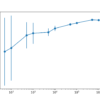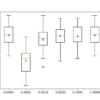Semi-supervised learning is a learning problem that involves a small number of labeled examples and a large number of unlabeled examples. Learning problems of this type are challenging as neither supervised nor unsupervised learning algorithms are able to make effective use of the mixtures of labeled and untellable data. As such, specialized semis-supervised learning algorithms […]










